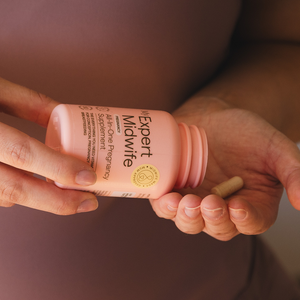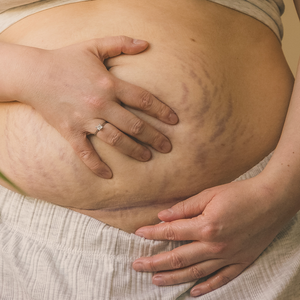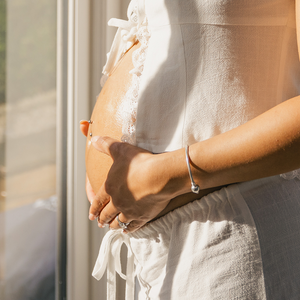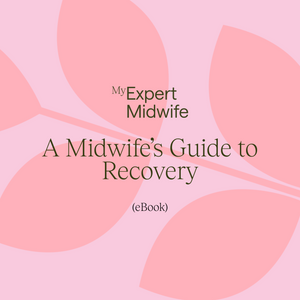For many decades, in a variety of birth settings, immediate umbilical cord clamping straight after the baby was born became part of normal birth practice- particularly in hospital settings.
Although, it is interesting to see that in the past thought was given to leaving the umbilical cord intact, as it was believed to be beneficial to the baby. In 1801, Charles Darwin’s grandfather, who was a doctor, said:
“Very injurious to the child is the tying of the navel string too soon. It should be left till all pulsation in the cord ceases. Otherwise the child is much weaker than it ought to be, a portion of the blood being left in the placenta, which ought to have been in the child.”
Extensive research in recent years has now revealed that the practice of immediate clamping of the umbilical cord can be detrimental to your baby. Delayed cord clamping (DCC) or optimal cord clamping (OCC) for all babies at birth, unless in need of intensive resuscitation, is now supported by the Royal College of Obstetricians and Gynaecologists, the Royal College of Midwives, as well as the World Health Organisation and National Institute for Clinical Excellence in the UK.
The reason that immediate clamping of the umbilical cord should not take place is because up to one third of your baby’s circulating blood volume is still contained within the placenta and umbilical cord at birth.
The transfer of this blood from you to your baby, which also contains nutrients and stem cells, needs at least a few minutes to be complete, but this timing can vary individually. If your baby's cord is clamped immediately, your baby can start their newborn life with up to 300mls less of the blood they were intended to have
The World Health Organisation defines the optimal time to clamp your baby’s cord as when it has stopped pulsating, which can be approximately 3 minutes or often much longer after the birth, but births and umbilical cords are very individual to each woman and baby. Some cords may pulsate (the pulsation assists the transfer of your baby’s blood back into their body) for as long as 30 minutes or more, where others may stop pulsating at 5 minutes or less after the baby is born.
You can request that the umbilical cord is left unclamped until it has stopped pulsating or until you have delivered your placenta after birth. If your baby is delivered via forceps or caesarean section time may be more limited due to other factors involved in the birth, but ask the doctor to delay clamping for as long as possible.
There are very few circumstances at birth where delayed cord clamping (DCC) cannot be implemented, however, the length of time may be subject to time limits due to the circumstances and the environment you birth in. If you want your baby to have DCC make sure you have it in your birth plan, or that the midwife caring for you in labour is aware of your wishes.
Benefits of delayed cord clamping:
- Your baby’s iron stores will be improved at 4-6 months of age and this protects your baby against becoming anaemic.
- If your baby does not breathe straight away after the birth, being attached by the unclamped umbilical cord will continue to supply oxygen-rich blood and nutrients before your baby takes their first breath. Remember that very few babies need any form of resuscitation at birth, with around 95% of babies breathing spontaneously once they are born.
- If your baby does need any help to breathe after birth, it is possible for your midwife or doctor to perform the necessary procedures whilst your baby is still attached by their umbilical cord.
- Premature babies may benefit even more than full term babies, as receiving a higher blood volume can protect their organs and brains.
- Recent research suggests that the immediate clamping of the umbilical cord can affect long-term learning and development in children.
Some parents may want a company to collect their baby’s cord blood at birth, for the future or in rare cases to help a sibling. Parents should be aware that the methods and amounts that the companies collect vary and that some companies are more supportive of delayed and optimal cord clamping than others. For more information please follow this link: https://www.bloodtobaby.com/umbilical-cord-blood-banking
Pre 1960 when home births were the norm and deliveries were usually managed conservatively and attended by midwives, the umbilical cord which attaches the baby to the placenta was very rarely clamped and cut early.
Instead, the cord was left alone and clamped only when the midwife was ready to do so. As hospital births became more commonplace in the 1960s and 1970s doctors preferred to clamp the cord early in the belief that it helped to reduce the risk of mums bleeding heavily post-delivery.
Extensive research into the subject of umbilical cord clamping over the last few decades has now shown that rather than clamping the umbilical cord immediately, leaving it to pulsate and transfer the blood from the placenta to the baby, as nature intended, has many proven benefits both long-term and short-term for a new-born.
It also does not increase the risk of a mother losing too much blood after birth, as previously believed.
What is DCC?
DCC is the process of delaying the clamping of the umbilical cord by a minimum of 1 minute but ideally until the cord has stopped pulsing and has turned white signifying that it has transferred all the residual blood (up to 300 ml or 30% additional blood volume) from the placenta to the baby.
However, different countries and different hospitals will all have their guidelines about how and when to practise DCC.
A discussion about DCC should take place antenatally with women and their families to ensure they are familiar with it and can consent/decline having been fully informed of the benefits and risks.
DCC is possible with any kind of birth – vaginal, operative vaginal or C-section and has proven to have even more benefits for premature babies in particular those extremely premature born less than 28 weeks gestation.
It can also be used whether mum opts for a physiological 3rd stage of labour where the placenta is delivered with maternal effort or active management 3rd stage where a hormone injection is administered to mum following delivery of the baby to encourage the placenta to detach from the wall of the womb.
What is the optimal time for DCC?
There is some difference in opinion about how long the baby's umbilical cord should be left before clamping and cutting.
Most organisations including the World Health Organisation (WHO), National Institute for Health and Clinical Excellence (NICE), and Royal College of Obstetricians and Gynaecologists (RCOG) all agree that a minimum of 1 minute is advised with a healthy mum and baby.
Unless there are immediate concerns regarding the health of the mum or baby; the American College of Obstetricians and Gynaecologists (ACOG) advise 30-60 seconds.
They all recommend clamping within 5 minutes but acknowledge that it may take 10 minutes plus for the cord to transfer the blood volume therefore discussing this with a healthcare professional and requesting optimal cord clamping (OCC) can be added to your birth plan.
For families wanting stem cell salvage, it is advised that a maximum of 1-2 minutes of DCC, any longer and there is a risk that there will be an insufficient sample of blood (minimum of 15 ml is required) left after transfer.
Premature babies, especially those less than 34 weeks gestation, may benefit from a faster transfer of the residual blood volume and this can be achieved by “milking” or “stripping” the cord; 4 or 5 strokes from the placenta along the cord to the newborn.
Benefits of delayed cord clamping
Your baby’s iron stores will be improved at 4-6 months of age compared with babies who had early or immediate cord clamping and this protects your baby against becoming anaemic
Of course, other factors including maternal antenatal iron stores and gestational age at birth also influence the baby’s iron stores.
If your baby does not breathe straight away after the birth, being attached by the unclamped umbilical cord will continue to supply oxygen-rich blood and nutrients before your baby takes their first breath.
Remember that very few babies need any form of resuscitation at birth, with around 85% of babies breathing spontaneously once they are born and a further 5-10% simply requiring some tactile stimulation such as drying and rubbing.
If your baby does need any help to breathe after birth, it is possible for your midwife or doctor to perform the necessary procedures whilst your baby is still attached by their umbilical cord.
This can be done on the bed or at a specialist bedside resuscitation station if the parents agree.
This means that alongside the procedures performed by the neonatologists, the baby continues to receive the extra blood volume from the cord and therefore the additional red blood cells capable of transporting more oxygen around their body and to their vital organs.
- Research suggests that premature babies may benefit even more than full-term babies from DCC for at least one minute, as receiving a higher blood volume can protect their organs and brains and may reduce mortality by up to 32% and the need for transfusion by approximately 10%.
- Recent research suggests that the immediate clamping of the umbilical cord can affect long-term learning and development in children, in particular fine motor skills such as pencil skills and social skills such as interacting with peers.
Are there any negatives to DCC?
The only apparent negative to DCC is that babies may be at increased risk of mild jaundice (an excess of bilirubin in their bloodstream caused by high levels of red blood cells in their first days of life which will be increased with the extra blood volume from DCC).
If this does occur jaundice is usually mild enough to respond well to blue light phototherapy, and the benefits of DCC long-term on both physical and mental health as a result of the increased iron levels have been evidenced in several large-scale studies.
Why are doctors against DCC?
Historically doctors cut and clamped the cord immediately after birth because of long-held beliefs that DCC increased the risk of complications to mum, haemorrhage; and to baby, jaundice and neonatal respiratory distress syndrome.
However, with increases in research over recent years, evidence has shown that mums are not at increased risk of bleeding heavily and that if jaundice occurs as a result of DCC it is easily and effectively treated with phototherapy.
Most doctors will now routinely practise Delayed Cord Clamping at birth in healthy mums and babies but will have low thresholds to intervene if they feel the situation has changed, for example, if a mum bleeds heavily or if a baby needs immediate life support- these situations can happen but are uncommon.
Do most hospitals practise DCC?
However, mums should be advised to include it in their birth plan and to add additional information such as leaving the cord until it has finished pulsating “Wait for White” which demonstrates all of the residual blood volumes have been transferred across to the baby.
If you are booked to birth your baby at a Trust that does not discuss DCC then ensure you have those conversations with your healthcare providers both antenatally and when you are in labour.
Discussing your wishes with your birth partner is also recommended so that they can advocate for you and speak up at delivery to ensure your wishes are followed where appropriate.
Creating the best environment for labour
As a woman preparing for labour, one of the key things to focus on is comfort - the process can be a long, tiring, and difficult time for any new mother, but by spending time creating the right environment, you maximise the chances of a more relaxed birth.
Our labour range, which is designed, developed, and delivered by midwives, is the perfect addition to any hospital bag, giving you everything you need as you move closer towards motherhood.
From our Birth Prep set through to our Labour Toolkit and Birth Recovery sets, we’ve got something to help every mother feel at ease as they bring their beautiful child into the world.


















